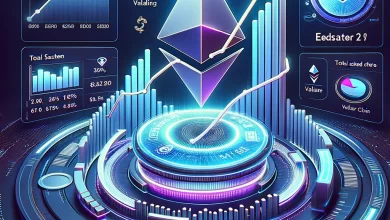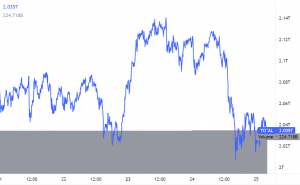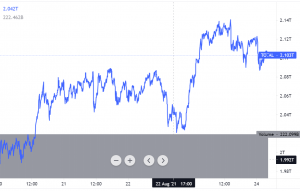
Ethereum 2.0 Phase 0 ‘Certainly’ Coming This Year, Deadline Unknown

Ethereum 2.0 developers are sure that the Phase 0 of the network’s upgrade will be launched this year.
Ethereum’s major network upgrade, Ethereum 2.0 (a.k.a. Serenity), should be rolled out in phases, the first of which is Phase 0. The upgrade will bring, among other things, sharding, proof-of-stake (PoS), and a new virtual machine.
On Wednesday, ETH 2.0 research team took to Reddit for their third AMA (ask me anything) session, where anybody interested in the network and in its recent development could participate to ask what they’re curious about.
One of those questions is an often asked one – realistically, when could the Cryptoverse see Phase 0 rolled out? “I don’t see a reality in which Phase 0 does not launch in 2020,” writes team member Danny Ryan. He explained that testnets are stronger with each week, and that audits are out, but also saying that such estimates depend on the specifications and on clients being deemed ready in third-party audits. “The rest depends [on] engineering concerns and stabilizing/optimizing in this last mile of work.”
Nonetheless, the current Ethereum chain is strong on its own and will stay so for the next couple of years, he says, as client teams make “heroic” gains in optimizations and layer 2 constructions are being implemented. Also, “ETH 1 living inside of ETH 2 allows for native access to the scalable sharded data layer,” says Ryan.
While Ryan finds that Phase 0 will “certainly” launch in 2020, his colleague Justin Drake is somewhat more cautious, positioning his confidence in this happening at 95%. Drake finds Ethereum’s 5th anniversary on July 30, as a good deadline, believing a launch is unlikely in Q1 and Q2, particularly if three clients are to be production-ready for launch.
Some people seem to have gotten frustrated with the deadline for Phase 0 being pushed back again, but the developers explained that as certain changes had to be made to Phase 0 specs to accommodate Phase 1’s new direction, extending the deadline was necessary. “There are significant unknowns in the next couple of months,” and audits to be completed, so setting a firm date is not possible, says Ryan.
Hodling vs. staking
As for the need for users’ ETH accounts to prepare for 2.0, Hsiao-Wei Wang said that no additional procedures need be done to ETH 1 accounts currently, while Ethereum co-founder Vitalik Buterin wrote that “if you are just holding ETH and want to keep your money, in all present proposals there is no risk from you going into a cave for five years. If you want to stake, then, of course, you have to actively deposit.”
If ETH from Ethereum 1.0 isn’t transferred to Ethereum 2.0 voluntarily, nothing should happen to it. Ethereum 1.0 will continue to run as a shard of Ethereum 2.0, Dankrad Feist explains, and it might be phased out. But with this current plan, he doesn’t see a need for forced migration, so no ETH should be lost.
Furthermore, Feist stated that currently there are no plans for a direct supply limit of ETH, as that could compromise security: if miners or validators are not paid fees, they will stop maintaining the chain, opening it to attacks. “Bitcoin may claim they have a supply limit, but there is no guarantee that once this is hit, the transactions would be enough to pay for the security that is still needed.” Fesit says that in Ethereum miners are paid rewards from ETH which will be created, “but almost all transaction fees will actually be burned. So it is possible that ETH supply actually shrinks in the future if adoption is high. However, if it is not, Ethereum should not compromise its security to have an artificial supply limit.”
With a participant commenting that general adoption likely needs a really simple mobile wallet, Buterin replied that there is work already being done on that, posting a tweet showing the Ethereum infrastructure team Nimbus doing an experiment and running a mobile ETH 2.0 client for the first time.
The #ethnimbus team is currently meeting in Brussels, playing with the first mobile #Eth2 testnet pic.twitter.com/X4wYql3WEZ
— Mamy Ratsimbazafy (@m_ratsim) February 4, 2020
As for interoperability with other chains, Drake said that the team has made an effort to facilitate this, and that two key technologies need for it are recursive SNARKs and the Inter-Blockchain Communication (IBC) protocol, in addition to the set of other features (SHA256, libp2p, BLS12-381 and WASM).
On the question if other developing blockchain technologies like Parity’s Polkadot/Substrate are seen as competitors to ETH 2.0, Drake replied that many high-quality blockchain projects exist, (such as Algorand, Cardano, Cosmos, Dfinity, Filecoin, Polkadot, Tezos), but that he believes that the ecosystem is very collaborative, so other blockchain projects are collaborators, rather than competitors. (Learn more: Are Attacks Between Rival Blockchains About to Rise?)
Another person asked about the possibility of creating or supporting a project built on decentralization using Ethereum. Buterin replied that he’s interested in decentralized finance (DeFi), while DAI is doing well and getting a lot of adoption, but he also expressed interest in decentralized governance innovations in general, DAOs (decentralized autonomous organizations) and DAICOs (decentralized models of initial coin offerings). He finds Ethereum Name Service to be the most promising non-financial app currently.
Meanwhile, ETH is currently (11:25 UTC) trading at USD 209.20, having appreciated 7% in the past 24 hours and 20% in a week.
Source: cryptonews.com
View original post





